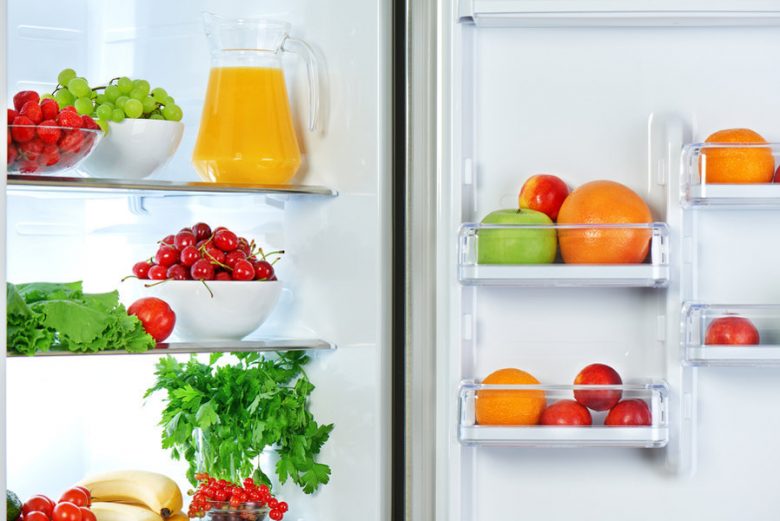4 food safety rules you can’t overlook when cooking with children
Today’s guest post comes to us from Lauren D. Brown atMess Makes Food and she writes about 4 must-follow food safety rules when cooking with children. Nothing can be more rewarding that doing an activity with your child where they are learning. One of those activities is cooking with children and helping them to learn to prepare and cook a meal from start to finish, including safely storing the food after the meal. Lauren speaks about how to properly ensure the safety of your family when it comes to cooking with children that might be something a child would not think about from washing hands to food prep to storage, Lauren covers each aspect as a reminder so that we all remain healthy and happy in our household. I really enjoyed the read. I hope you do too.
Enjoy.
– Will
Advertisement
4 must-follow food safety rules when cooking with children

4 Basic rules on food safety – checklist for children
Basically, food poisoning, due to viruses and bacteria, can be prevented by four simple rules when both parents and children are preparing a meal:
- Clean – Wash your own and your children’s hands often

No one can deny the importance of washing your hands. Nonetheless, aside from that, cleaning all the surfaces of your kitchen is also vital, in particular, the countertops, the kitchen appliance, the reusable bags, and others (even if you need to peel or slice anything before cooking).
Taking a specific example, the inside of your microwave is easy to get dirty, owing to the food that can cover the insides of the microwave, so the bacteria can grow quickly. Correspondingly, it is necessary to clean both the outside and inside, involving, the buttons and handles to prevent food poisoning.
Washing hands in the right and most thorough way will dramatically decrease or remove the risk of food poisoning. Additionally, the spread of flu or cold is also minimized a significantly. Here are some things to always consider. You should also was wash your hands:
- Before and after eating, preparing the meal, after handling the pet, using the toilet, changing diapers.
- With the warm soapy water ~ 20 seconds. Asking your kids to sing a song while washing their hands can help these 20 seconds breeze on by.
- Cleaning the surfaces of the kitchen, particularly, the countertops, freezer, tables, fridge, shelves, and others
- Separate – store your foods in a separate way – poultry, eggs, raw meat, and seafood
Cross-contamination can happen once germs from raw/ unclean objects (meat, fish, poultry,…) are placed close to the ready-to-eat or cooked dishes.

- Keep your foods separate so that it can prevent the cooked foods from cross-contamination by raw poultry, egg, meat, and seafood.
- Utilize more than a single cutting board – one for the cooked/ready-to-eat foods (vegetables, bread, fruits,…) and another for seafood, raw meat, and poultry.
- Clean these cutting boards with the warm soapy water after using and put them in your dishwasher. Additionally, you should also utilize a sanitizing solution or bleach solution on your cutting boards and don’t forget to rinse thoroughly with water after that that activity.
- Be sure to discard old cutting boards when you begin to see cracks, excessive scars of knives, and crevices.
- Chill – Refrigerate properly to 40F or lower
The majority of the food safety programs recommend that housewives should refrigerate their foods properly at a suitable temperature. The purpose is to prevent food poisoning and slow the growing process of bacteria.

- Sets your freezer at 0 degrees Fahrenheit and fridge under 40 degrees Fahrenheit.
- Place a fridge thermometer in your fridge. Don’t forget to check it frequently.
- Put the foods that you bought from the store in the refrigerator and freezer right away, especially the perishable foods.
- Refrigerate any leftover foods from your meal.
- Store your foods in small containers ~ 2 inches or less.
- Consume packaged foods based on its use-by date/date of expiration.
- Use cold-running water or the microwave in order to thaw the frozen foods before cooking with children.
- Marinate your meats in the refrigerator.
- Chill – Refrigerate properly to 400F or lower
Meat, egg, fish, seafood, and poultry must be cooked at the proper temperature so as to destroy any harmful bacteria. Even though you cook with modern appliances such as using a toaster oven, it’s also necessary to choose the right temperature for your dishes.
- To check to make sure each of the following meats are done: poultry, meat, seafood, fish, and dishes with eggs. Be sure to utilize a food thermometer if you are unsure of when a certain type of meat isn’t cooked completely yet.
- Leftover foods must be reheated at 165 degrees Fahrenheit. For older adults, reheat all deli style meat as well.
- Boil the meat marinade ~ few minutes if you want to use it for your meal.
- Follow the proper temperature below for your dish:
- + Lamb, beef, veal ~ 1450F;
- + Ground lamb, beef, veal ~ 1450F;
- + Pork ~ 1600F;
- + Egg dishes, casseroles ~ 1600F;
- + Poultry ~ 1650F;
- + Leftover ~ 1650F;
- + Ground poultry ~ 1650F;
- + Using a fork with and knife to open opaque meat to check how done it is on the inside;
It is my hope that these 4 rules will help parents have a healthy cooking with children experience. At the same time, the risk of food poisoning is also minimized and/or eliminated by keeping everyone safe from germs.
